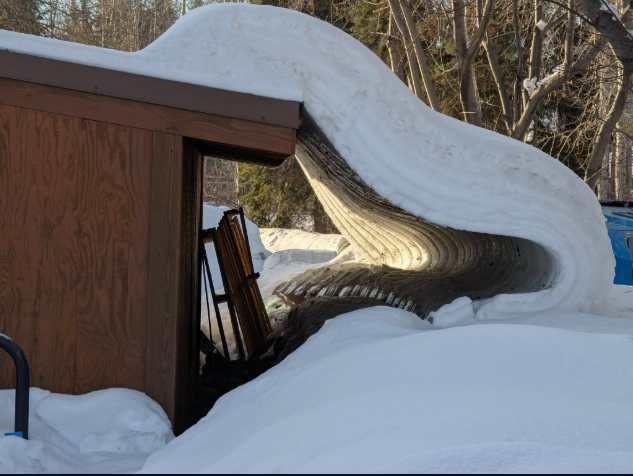
The monetary impact of changes in snowfall due to climate change is likely in the trillions of dollars.
Professor Matthew Sturm, with the University of Alaska Fairbanks Geophysical Institute, reported in a recent paper for the American Geophysical Union that the costs of snowfall changes are “measured in trillions, not billions, of dollars.” Sturm collaborated on the invited paper with Michael Goldstein of Babson College and Charles Parr of the UAF Geophysical Institute.
Their work on valuing snow comes on the heels of a 30-year run of falling snow levels and changing snow conditions. Snow scientists have recorded that snow depths and extent have decreased globally, that snow is falling later and melting earlier, and that more winter precipitation is coming as rain rather than snow. The potential impacts of these trends mean that action needs to be taken soon if the estimated costs are to be avoided.
“With snow cover changing worldwide in several ways, there is pressing need to determine global, regional and local rates of snow cover change, and to link these to financial analyses that allow for rational decision-making,” the researchers wrote.
The trend of decreasing snow creates problems in several ways. For one, less snow means that there will be less mountain runoff, which provides water to low-lying adjacent areas in the spring and summer, when farmers need it most. This spring runoff is extremely important for agriculture. Portions of the multibillion-dollar outdoor recreation industry are based on snow cover. Cities like Los Angeles depend on snow runoff for the water in their faucets and for electrical generation. Much of California’s food production relies on meltwater from snow.
Estimated losses to agriculture and industry in the American Southwest from reduced snowmelt flowing into the Colorado River alone range from $1 billion to over $1 trillion.[xyz-ihs snippet=”adsense-body-ad”]Most usable water in the western United States comes in the winter in the form of snow, and the snowpack stores water until spring and summer when it is most needed. Approximately 162 million acre-feet of snow water equivalent are deposited in the western mountains each winter.
Further, snow is uniquely helpful for keeping the planet cool.
“The cooling power of long-lying spring snow in northern Canada, Alaska and Siberia (an area of 19 million km2) sheds about 2X 10-12 gigajoules of energy per year back to space that might otherwise have heated our planet,” the researchers wrote. “This cooling benefit doubles when we add in the effect of snow-covered Arctic sea ice.”
The researchers sought to estimate financial losses from the changing snow resource. They merged snow science and financial analysis to find the answers. Depending on the valuation of water and the speed of change, the results showed losses of $1 trillion to as much as $4.4 trillion in 20 years from now.
One critical piece of information is knowing the rate of change to snow, both now and in the future. Small differences in the speed of the change can make a huge difference in whether projects, such as dams and reservoirs, are needed to mitigate the loss. “Given the magnitude of the impact and possible mitigation costs, we need to be making these decisions on the soundest and best scientific facts and knowledge possible,” the researchers wrote.
As decreasing snow is linked to our increasingly warming climate, snow loss can become a self-perpetuating problem. The solution, Sturm and his collaborators said, is action both within the scientific community and by decision-makers and stakeholders.
Source: Geophysical Institute [xyz-ihs snippet=”Adsense-responsive”]




